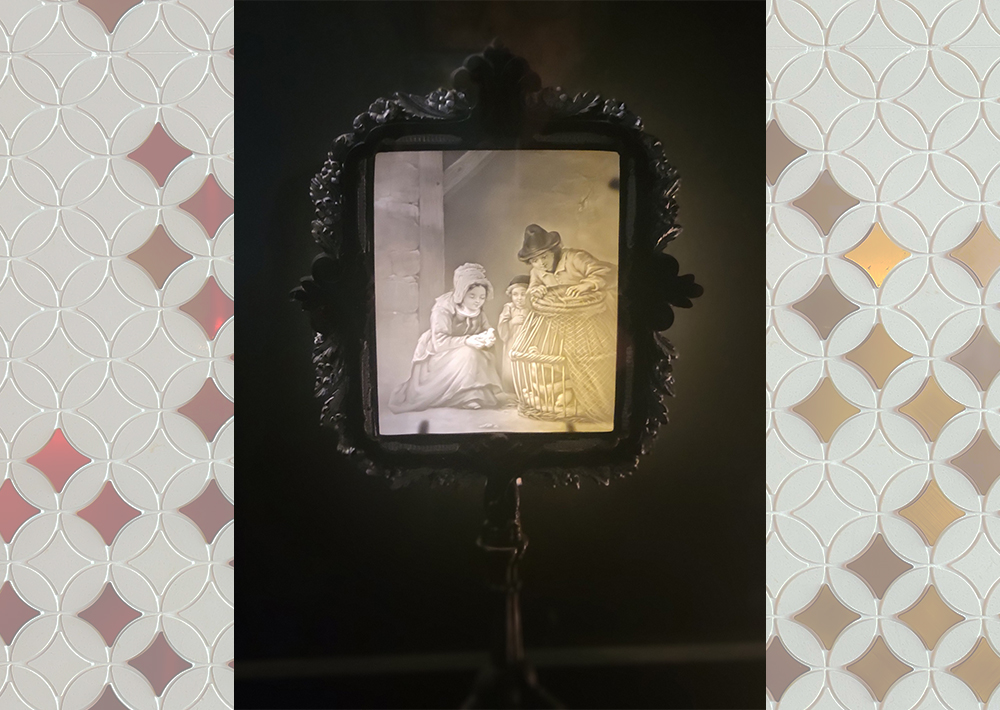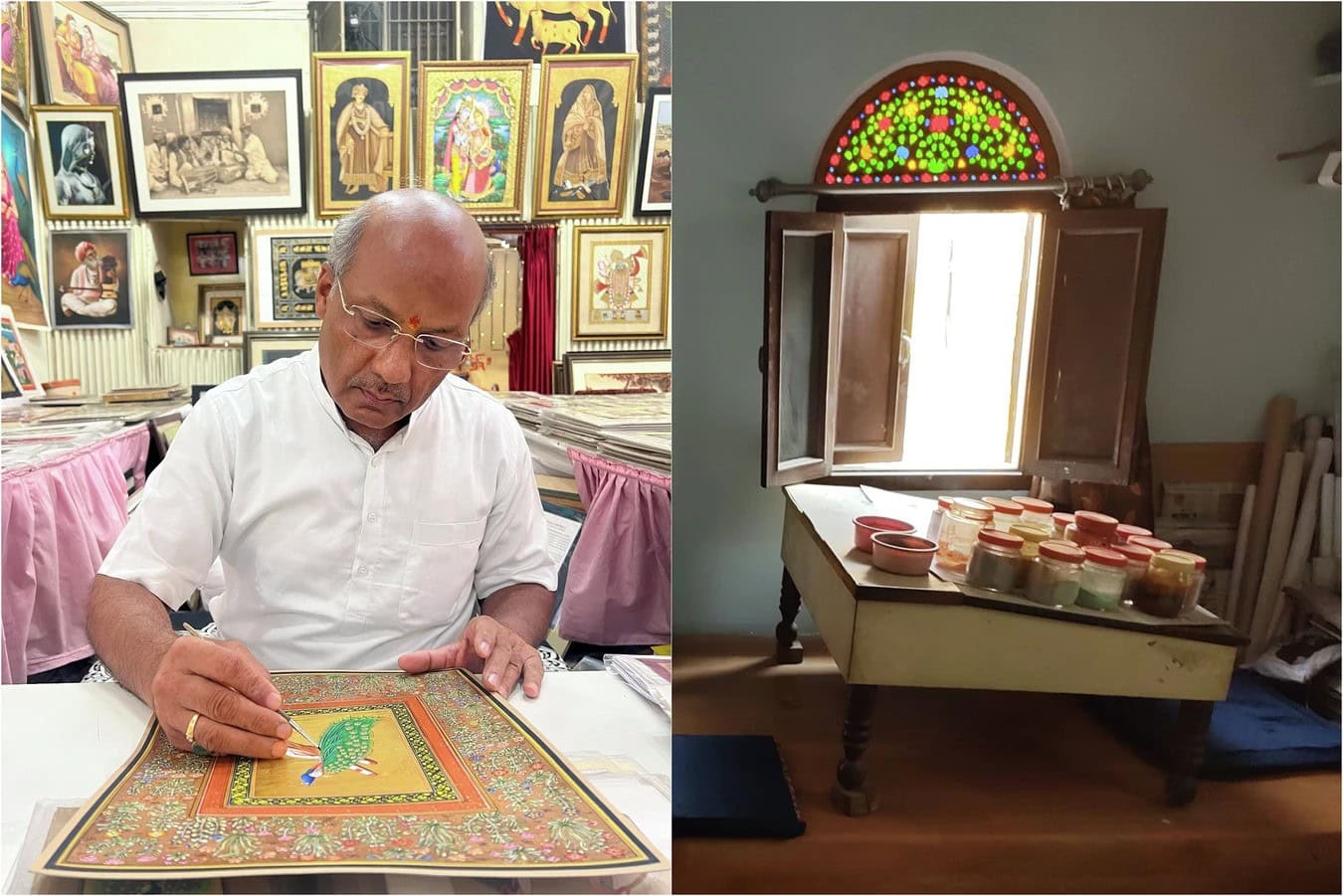
[Image above] What secrets are hiding within this ancient mummy portrait? A new study took a close look to find out. Credit: University of Utah
While the inevitable counterpart of life, death can be an uneasy topic.
Perhaps this year more than ever—as the COVID-19 pandemic rages on, contributing to well over 1.6 million deaths worldwide thus far—the temporary status of our existence on earth is undeniably at the front of many people’s minds lately.
Yet not all cultures consider death as a finite ending. Many cultures past and present see death as just another step in a person’s overall existence, one that extends well beyond the physical realm and continues into an afterlife.
Take, for example, the Toraja people of Indonesia, who often keep their loved ones’ dead bodies around for years after they die. The preserved body remains in the house, and the family treats the deceased as if they are still alive, bringing them meals and talking to them.
While other cultures may view this practice as grim, the Toraja do not see dying as a finite line between being alive and being dead—instead, they view the process as a gradual and continual transition from one world to the next. In their culture, the funeral is the most important day of your life and not an occasion to skimp on. So they often spend years saving up enough money to give their loved ones a proper sendoff into the next realm. In the meantime, they care for the deceased’s body and keep it safe at home.
The idea that the body is an important vessel to the afterlife is mirrored in ancient cultures as well. Egyptians believed that the body was critical to a good afterlife, hence they developed involved mummification techniques to preserve the physical body long after death.
While we often think of the mummy masks and opulent tombs of famous Egyptian rulers like King Tut, mummification practices continued in Egypt even after it became part of the Roman empire in 30 BCE. And from the first to third century CE, those mummies were often accompanied by portraits of the deceased, called mummy portraits, that depicted the physical likeness of the person preserved inside. These portraits also were important for depicting status of the deceased, whether the actual status they achieved in real life or what they aspired to.
Yet many unanswered questions still remain about mummy portraits, the people they depicted, and the cultural context in which these works of art, life, and death were created. Today, more than 1,000 mummy portraits are known to exist, preserved thousands of years after they were created, offering a potentially rich source of information about the culture and people at this time in history.
“We’re very interested in understanding the meaning and origin of the portraits, and finding ways to connect them and come up with a cultural understanding of why they were even painted in the first place,” materials scientist Darryl Butt says in a University of Utah press release.
Butt was part of a team that recently published an open-access paper in the International Journal of Ceramic Engineering & Science that takes an incredibly detailed look at the materials that make up a pigment used to paint one of the mummy portraits.
The aptly named portrait, Portrait of a Bearded Man, depicts a curly-haired bearded man dressed in a toga notable for its purple markings.

(A) “Portrait of a Bearded Man” (Walters Art Museum #32.6), dated c. 170-180 CE from Roman Imperial Egypt. (B) The portrait under ultraviolet light. The purple clavi on the shoulders appear pink-orange, indicated by an arrow. Credit: University of Utah
“Since the purple pigment occurred in the clavi—the purple mark on the toga that in Ancient Rome indicated senatorial or equestrian rank—it was thought that perhaps we were seeing an augmentation of the sitter’s importance in the afterlife,” Glenn Gates, co-author and conservation scientist at the Walters Art Museum in Baltimore, where the portrait resides, says in the release.
In addition to the potential cultural significance of the purple markings in the portrait, the pigment itself caught the team’s eye because it contained “unusually large, rough gem-like purple particles embedded in the purple paint,” they write in the paper. Those particles spanned as much as 3 mm in diameter, whereas most ancient paint particles typically measured 20–50 µm.

Detail of the purple clavus in the paining, showing a large purple pigment particle with a rough gem-like appearance. Credit: University of Utah
While the most valued type of ancient purple dye comes from snails, the pigment in the painting seemed to be different. So what pigment was used to paint these symbolic purple markings on the bearded man’s toga?
To answer that question, the team took an incredibly up close and detailed look at one 50-µm pigment particle carefully extracted from the painting. Yet even before analysis could begin, a sample so small posed its own unique challenges.
“The particle was shipped to me from Baltimore, sandwiched between two glass slides, and because it had moved approximately a millimeter during transit, it took us two days to find it,” Butt says in the release. “The process of analyzing something like this is a bit like doing surgery on a flea.”
Once the team found the particle and manipulated it for analysis—using an eyelash dipped in adhesive—they used energy-dispersive X-ray fluorescence (XRF) techniques to identify its elemental composition. Results showed that the pigment particle contained lead, aluminum, titanium, silicon, potassium, iron, sulfur, and chromium. Yet analysis revealed no bromine, ruling out many of the commonly known sources of purple in ancient paintings, including snails and lichens.
The usual presence of chromium and absence of bromine indicated that the purple may have a novel source, so the team dug deeper.
Further chemical analysis with energy-dispersive X-ray spectroscopy (EDS) confirmed the XRF results and indicated the particle was mostly organic. Specifically, the results indicated that the pigment was likely an organic lake pigment, “an organic dye affixed to an amorphous hydrated alumina substrate through the use of a potash alum mordant, potassium aluminum sulfate, KAl(SO4)2·12H2O, used for dying since 1000 BCE,” the authors write in the paper.
Elementally, the results suggested that the pigment was consistent with plant and insect sources, which were common sources of color in ancient works of art. However, the team was intrigued by the fact that sampling from different areas of the pigment particle revealed it had a heterogenous composition, surprising because organic lake pigments were previously thought to be amorphous.
Accordingly, further analysis with atom probe tomography—a technique that can determine the spatial distribution of elements in other materials but has not been previously applied to an organic pigment—revealed an interface between two phases of a tiny sample of the pigment particle.
Using focused ion beam milling, the team carved out an even tinier portion of the already tiny particle, exposing a 100-µm2 cross-section of the pigment particle. Closer inspection with transmission electron microscopy revealed geology-like stratigraphy in the sample cross-section, again surprising because ancient lake pigments were thought to be amorphous.
The sample contained three distinct layers consisting of different elemental makeups and crystalline characteristics. Larger lead-based particles and crystallites were predominant in the outer layer, suggesting “growth was favored over nucleation” when the pigment formed, the authors write in the paper. The inner layer instead contained smaller crystallites, “suggesting nucleation was favored over crystal growth.” The middle layer was heterogeneous, sort of like a gradient area between the two.

Cross-section of the particle, with three distinct layers visible. Credit: University of Utah
So what does it mean? “All of these reported findings point to a close association between the purple pigment particle and ancient dye practice and technology,” the authors write. In other words, the findings suggest how an ancient artist may have formed such a pigment.
In the press release, Butt explains the findings may indicate that when Egyptian dyers produced red dye in lead vats, a sludge may have developed inside the vat that was a purplish color. “Or, they were very smart and they may have found a way to take their red dye, shift the color toward purple by adding a salt with transition metals and a mordant [a substance that fixes a dye] to intentionally synthesize a purple pigment. We don’t know,” he adds.
While the ancient artists will continue to preserve the full secrets of their practice, these analytical insights give us unique perspectives into their world and the works of art they created. Not only can such insights suggest how a pigment was created, but they also provide important clues that can identify the time, place, and context in which similar works of art were created, as well as how we can preserve them for many more years to come.
Interested in learning more about conservation science? Check out the cover story from the September 2014 Bulletin, in which author Glenn Gates reveals more about how cultural heritage science can help discover the material secrets of art.
The open-access paper, published in International Journal of Ceramic Engineering & Science, is “Microstructural and chemical characterization of a purple pigment from a Faiyum mummy portrait” (DOI: 10.1002/ces2.10075).
Author
April Gocha
CTT Categories
- Art & Archaeology
- Material Innovations
Related Posts
Celebrating the US Semiquincentennial: Ohio Creativity Trail
December 16, 2025
Lithophanes: Dedicated museum sheds light on these porcelain artworks
November 13, 2025


